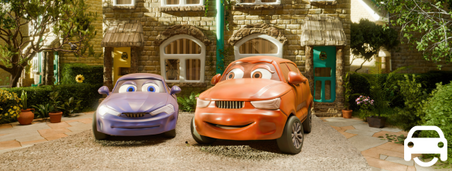Could Car Park Fires Become More Common?

Last month a new chapter was written in the storybook of holiday and travel nightmares. October 10th was the day that a raging fire tore through a multi-storey carpark at Luton airport, writing-off more than 1400 cars.
The chaos that ensued disrupted the travel plans of 34,000 passengers, as 220 flights were cancelled, and 100 firefighters fought for 12-hours to bring the flames under control. In its wake, the smouldering skeleton of the carpark will take more than a year to clean up, as cars are a carefully removed from the delicate superstructure at a rate of 10 a day.
To add insult to injury, many of the affected car owners have since discovered they’ve lost their no-claims bonus, while caught in the middle of a legal wrangle between insurance companies over who is to blame for the fire.
While the original source of the fire appears to be known – a diesel Land Rover belonging to a man who was later arrested. Specific details on how the fire started are still unclear, as insurers, the carpark owners and other third parties, battle to find a culpable source able to meet the cataclysmic damage costs.
In the meantime, there’s a growing concern that fires in carparks could become more commonplace, as building experts and industry-insiders point to a perfect storm of contributing factors. The Luton fire followed a blaze at a carpark in Liverpool King’s Dock, that saw 1,000 cars destroyed on New Year’s Eve 2017. While notable smaller incidences have happened around the world.
Flawed by design
The heart of the new threat is that car parks and cars have both changed significantly in design over the past twenty to forty years.
Compared to prior generations of vehicles, cars themselves are much bigger, meaning there is simply less space between them when parked cheek by jowl in cramped places. According to the agency Car Design Research, everyday vehicles like the Volkswagen Golf increased in size by 40% from 1974 to 2015. While the Mini ballooned by a massive 61% between its launch in 1959 to 2018, and a Range Rover is 43% bigger compared to its 1981 ancestor.
With carparks designed to cram in as many vehicles as possible, larger vehicles leave less space for a fire to leap from one car to the next, with the inevitable chain reaction an increasing possibility.
To add further risk, modern day cars are built with a higher proportion of weight-saving plastic components, rather than more resilient metal. Included amongst these are a growing number of plastic fuel tanks that simply melt under extreme heat, leaking flammable liquid to further fuel the spread.
While fires have not yet been directly attributable to electric vehicles, all cars undoubtedly have a higher proportion of electrical components that could potentially spark a flame.
Carparks have similarly undergone a recent transformation that, when added together, also raise the threat of fire. Most modern carparks have sloping floors to manage drainage from one level to the next, in the process, creating a convenient channel for escaped fuel to cascade through the building.
Cost and time-saving measures have also meant that car parks are increasingly built from quick to erect metal structures that become malleable at high temperatures. According to reports, the carpark at Luton was constructed with uncoated steel that softens at temperatures around 500C. There was also no sprinkler system in place, leading to several sections bending and collapsing under the heat.
To cope with these combined factors, fire-safety experts are calling for a review of regulations governing car park safety design, looking at all measures from building materials and layout structures to preventative measures to stop the spread of a fire.
While many affected by the Luton fire and similar events have endured significant emotional pain and inconvenience, mercifully, the damage so far is limited to personal property and buildings.
Let’s hope the lessons of Liverpool, Luton and other similar events, lead to a growing understanding of how to cope and deal with such tragedies. And ultimately, how to prevent them happening again.





